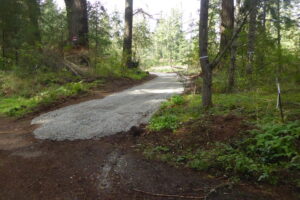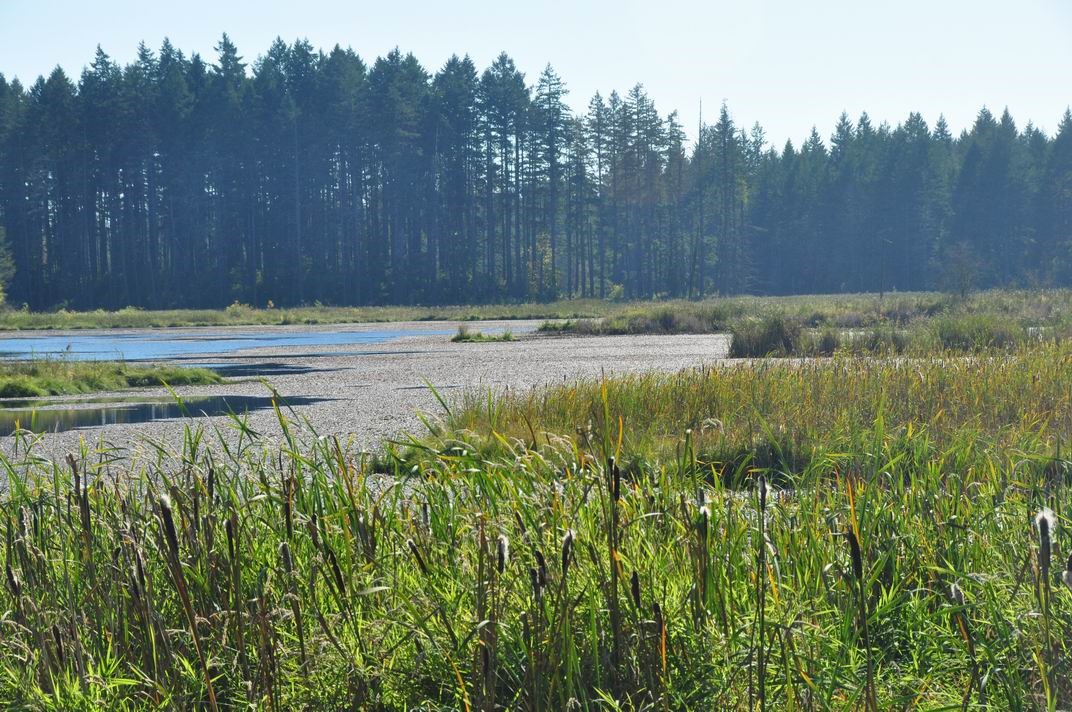On October 4, 2024, Pierce County Planning staff made an inspection of Wasmund Road near Spanaway and Audubon Creeks. They were investigating a complaint about digging and excavation without a permit. They found that installation of two culverts in the road and extensive gravel added to the road and on JBLM property.
The Tacoma Rescue Mission has received neither a Site Development Permit nor a county Clearing and Grading Permit necessary to do work on Wasmund Road or to the wetlands surrounding Spanaway Marsh. Such excavating in wetlands and creeks also requires Hydraulic Permit Application from Department of Fish and Wildlife.

Kirk Kirkland filed a complaint on behalf of the Environmental Coalition of Pierce County and at the same time asked the Planning Staff not to allow further damage by delaying the issuing of the county’s Site Development Permit and a Clearing and Grading permit.
If approved, the Site Development Permit will provide plans and specifications on how the Tacoma Rescue Mission can build a Tiny Home Village of 289 homes on an 89-acre site on Spanaway Loop Road.

Spanaway Concerned Citizens has appealed the Conditional Use Permit for the site. The decision is not expected from the Thurston County Court Judge until March of 2025.
The appeal aims to ensure compliance with SEPA’s requirements forcing consideration and analysis of the project’s impacts on the state-endangered Western Gray Squirrel and its habitat, wetlands, and other elements of the environment.
The court appeal calls for county staff to withdraw the Mitigated Determination of Non-Significance and directs them to instead issue a threshold Determination of Significance for the proposed project, resulting in an Environmental Impact Statement being required.
In a recent County Council meeting, the chair of the council, Ryan Mello asked the county Finance Department to confirm that financing for the project would be delayed until the court judge made his decision.
The Environmental Coalition asked the planning staff to not give out a Site Development Permit or a Clearing and Grading permit, as it may result in cutting down trees, damaging the wetlands and streams and further disturbing wildlife habitat. This wildlife habitat has state listed trees on the site as well as a state endangered species of the Western Gray Squirrel.
The Spanaway Creek crossing, a new culvert has been installed and substantial gravel added to the road at both Spanaway Creek and Audubon Springs Creek. This created a flow that altered the natural flow between wetlands into Spanaway Marsh. At Spanaway Creek, the county’s complaint report said that “The culvert replacement activities went into JBLM property”. And the excavation “raised the previous road level with considerable amount of fill.”
In addition, the report from the site visitation by the staff said, “a gravel driveway was placed in the eastern area just north of the gate on to Tacoma Rescue mission property.” This gives access to the building site.
“Washington State law also requires people planning projects in or near state waters to get a Hydraulic Project Approval (HPA) from the Washington Department of Fish & Wildlife (WDFW). This includes most marine and fresh waters,” according to the WDFW application. Violations of permit conditions can cost up to $10,000.
In an exchange of e-mails with Sean Gaffney and Rob Jenkins in the Planning Department, Kirk Kirkland asked the staff to withhold the Clearing and Graveling Permit until the Thurston County Superior Court rules on the CPU permit. Rob Jenkins said a decision would be made in the next week about the size ofthe fine and other mitigation matters.
However, if the developer is granted a permit and allowed to proceed with clearing and grading, they are likely to remove evidence necessary to show the value of the forests, the wetlands and the wildlife habitat that an Environmental Impact Statement would indicate.
The Tacoma Rescue Mission is in a hurry to begin the project as some of their funding requires them to complete parts of the project before the end of the year in order to receive further funds from various providers.
A few decades ago, environmental groups successfully appealed the Environmental Impact Statement that was used to stop the building of a four-lane highway called the Cross Base Highway. The highway planner’s design involved bridging Audubon Springs and clearing trees for the proposed state highway.
The highway would have connected Pacific Avenue with Interstate 5 near Tillicum. The state court found that the Environmental Impact Statement was inadequate as the highway would destroy wildlife habitat at this location. The highway was never built.
Since that time, WDFW has changed the status of the Western Gray Squirrel from a “listed species” to an “endangered species”.
Spanaway Marsh is not the only place where the Western Gray Squirrel has habitat around the state. Unfortunately, these Squirrels are dying in these other locations, principally due to increased traffic.
It is hoped that the favored treatment given to the developer by the “Executive Priority,” said Kirk Kirkland, “will not undermine the ability for the Superior Courts Decision to protect this wildlife corridor.”


